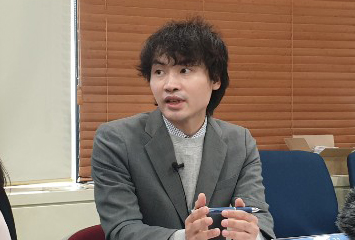The new coronavirus (COVID-19) pandemic prompted the need for an expansion of treatment infrastructure for seriously ill patients in Korea, experts said.
The Central Disaster and Safety Countermeasures Headquarters said the government has secured 117 beds for negative pressure rooms to treat critically ill COVID-19 patients.
Across the nation, 97 large hospitals were able to maintain a surplus of 100-110 hospital beds for severe COVID-19 patients, according to the government.
However, Professor Jang Sung-in at the Preventive Medicine Department of Yonsei University College of Medicine, said the nation still needed to enhance treatment infrastructure for severe patients, although boosting primary care could reduce the incidence of severe illnesses and the ensuing costs.

He made this and other remarks on a live YouTube show Tuesday, by K-Healthlog, a channel operated by The Korean Doctors’ Weekly, the sister paper of Korea Biomedical Review.
Jang noted that the COVID-19 crisis revealed the loophole of the free healthcare service in the U.K. The fatality rate of COVID-19 in the U.K. where all the British people get free health care under the National Health Service (NHS) hit 11.1 percent. In comparison, the number in Korea and Germany under the National Health Insurance (NHI) system remained at around 1.9 percent.
Jang said allowing people to get healthcare service for free and preparing medical resources were two different things. Still, the British government’s focus on “free service” must have missed the latter.
“As they spent more money in free healthcare, they must have reduced a budget for reserving medical resources,” he said.
Italy, Spain, and the U.K., where COVID-19 fatality was high, had all the NHS system, and these countries tend to concentrate on primary care and prevention, Jang went on to said.
On the other hand, countries with the NHI system had a high quality of healthcare for the seriously ill and low mortality in acute myocardial infarction or stroke, he said.
While the British type of free healthcare system could not maintain expensive infrastructure for severe patients, Korea’s national health insurance system could make private medical institutions compete to upgrade infrastructure for seriously ill patients, Jang pointed out.
Jang emphasized that amid the COVID-19 pandemic, the government has to decide whether to enhance the public health in state-run institutions or let the private sector run it efficiently.
Lee Wang-jun, the leader of the Working Group of the Korean Hospital Association’s COVID-19 Emergency Response Headquarters, said Korea could prevent a spike of confirmed cases, after a surge in Daegu and North Gyeongsang Province, because of dedicated government officials and healthcare professionals.
However, the government’s response to COVID-19 was not based on a principle or a stable system but relied excessively on the sacrifice of the public and the medical community, Lee said.
Lee claimed that the government should change basic strategies for treatment infrastructure for severe patients, adding that private medical services could be shifted to public medical resources.
“It is time to discuss how to operate the public/private health system in normal days and crises such as COVID-19 pandemic,” he said.
Although Korea had a relatively high number of hospital beds, compared to other countries, the beds were mostly for nursing centers, Lee went on to say.
Compared to general beds, beds for severe patients were still insufficient, he said. “We should cut down the number of general beds and redirect those resources to increase the number of beds for severe patients,” he added.

